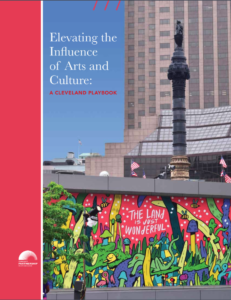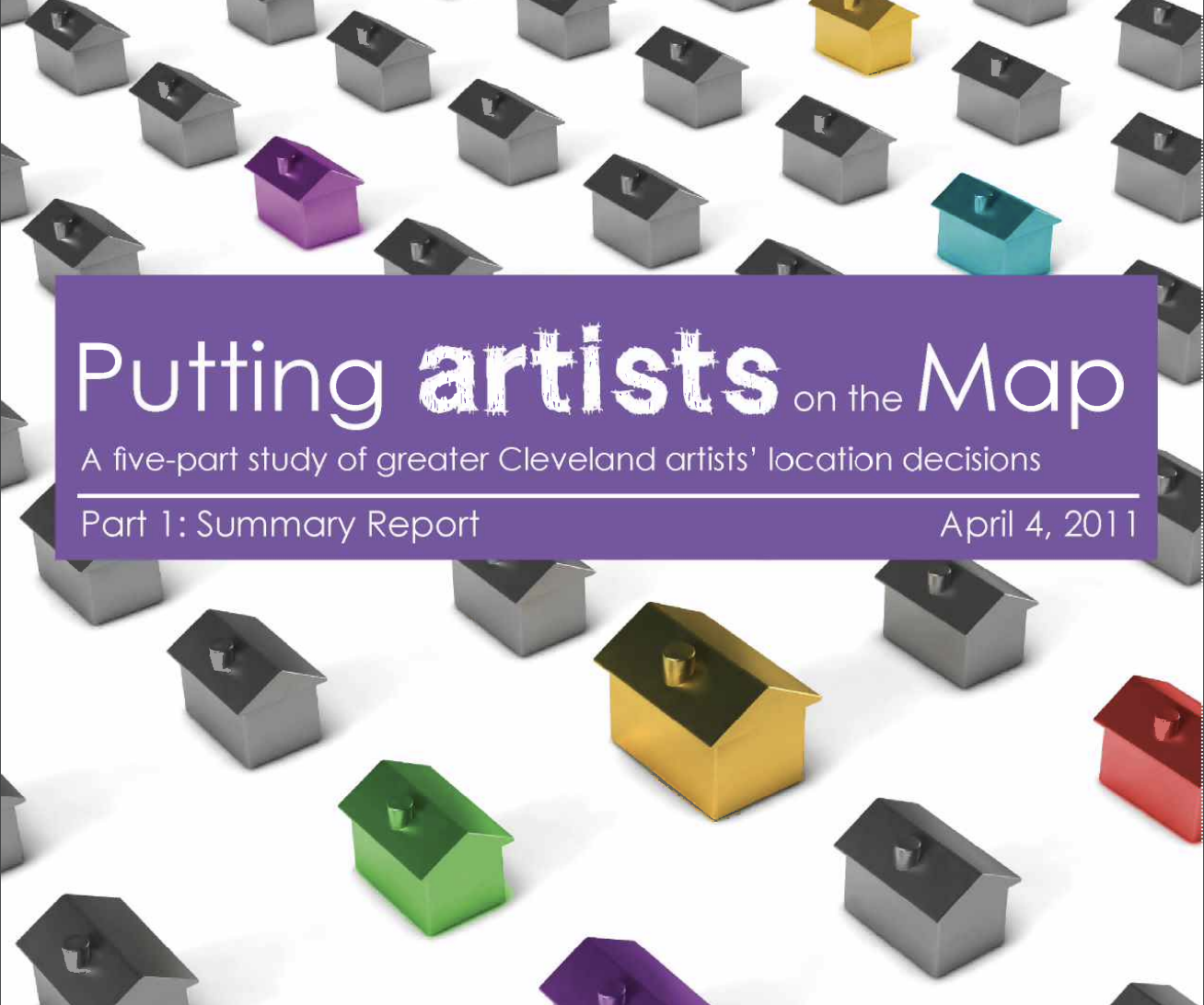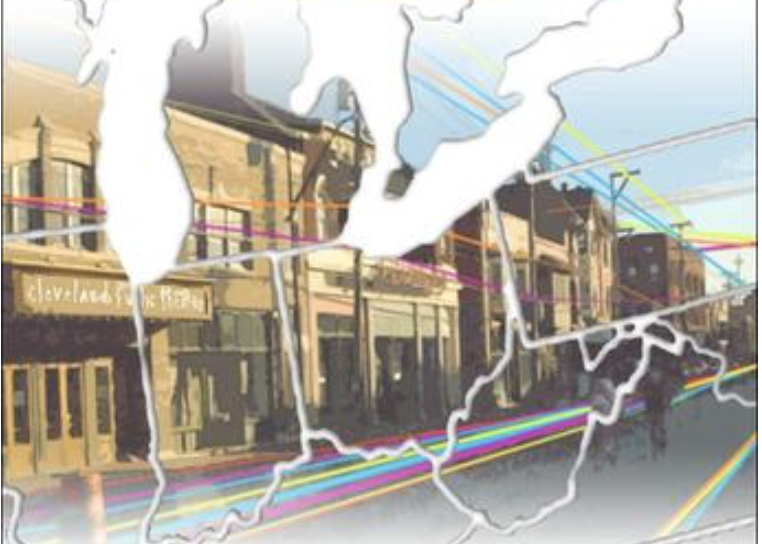Elevating The Influence of Arts and Culture
A Cleveland Playbook
 A history, of the tactics that contributed to successes in the Cleveland, Ohio, area to realize the fuller potential of arts and culture. You’ll also see call-out material with more concrete, universal lessons to help you apply those tactics in a variety of settings. 2018.
A history, of the tactics that contributed to successes in the Cleveland, Ohio, area to realize the fuller potential of arts and culture. You’ll also see call-out material with more concrete, universal lessons to help you apply those tactics in a variety of settings. 2018.
As a result of CPAC’s work:
- Tax money has been directed for arts and culture
- Facilities have been built or renovated
- Governments have become involved
- Creative businesses have merged or collaborated
- Innovative cross sector partnerships have emerged
Through CPAC’s process outlined in the playbook, organizations and communities anywhere can see what worked in Northeast Ohio and what did not. Any one of the strategies in this playbook could be beneficial, depending on a community’s vision and current situation. It is our hope that our story can provide other organizations with insight into how they might strengthen their own arts and culture sectors and thus their whole communities.
Spiral-bound print copies available by request.
When Artists Break Ground
When Artists Break Ground
When Artists Break Ground provides information about, and lessons from, the Artists in Residence program, a collaboration between CPAC and Northeast Shores. The organizations invested $2.2 million in a 3-year period into artist-neighborhood relationships in the Waterloo area in North Shore Collinwood. The report shares how the process worked: its strengths, its shortcomings and third-party recommendations and reflections. A wealth of data supplements the report to illustrate changes in neighborhood residents’ perceptions, traction among audiences and changes to the neighborhood’s landscape.
Putting Artists on the Map
Putting Artists on the Map
A Five-Part Series on Artist Locations

Arts Cleveland worked with Cleveland State University to develop four statistically-based methods to help communities understand what amenities may be driving arts and culture to them or away from them. Part 1 of this series is an executive summary of all findings. Part 2 discusses neighborhoods and what makes them attractive to artists. Part 3 discusses artists’ responses to a live/work preferences survey. Part 4 identifies variables that may suggest a neighborhood is desirable for artists. Part 5 details the characteristics of current artist residences. The data contained in these reports can help communities understand arts and culture assets and what they can do to become more artist-friendly.
Content
- Artist Neighborhoods 9.95 MB
- Artist Housing and Space Survey 4.48 MB
- Regression Model 3.99 MB
- Artist Housing Characteristics 1.39 MB
From Rust Belt to Artist Belt II
From Rust Belt to Artist Belt II
A companion report to Arts Cleveland’s (formerly CPAC) second From Rust Belt to Artist Belt conference. 2010.
 Arts Cleveland’s second From Rust Belt to Artist Belt conference focused on what happens when the arts and culture sector and local neighborhoods join forces. The conference guided participants through a discussion of the work innovative community developers, artists, arts administrators and policy makers are doing to revitalize industrial cities. The breakout sessions were designed to inspire attendees to engage artists as partners in community revitalization. Best practices were also highlighted. This document is a detailed summary of the sessions, discussions and findings that emerged from the conference. It focuses on how former industrial cities are using artist-based community development to improve the stories being told about their communities today. It also focuses on the practical considerations of using this strategy.
Arts Cleveland’s second From Rust Belt to Artist Belt conference focused on what happens when the arts and culture sector and local neighborhoods join forces. The conference guided participants through a discussion of the work innovative community developers, artists, arts administrators and policy makers are doing to revitalize industrial cities. The breakout sessions were designed to inspire attendees to engage artists as partners in community revitalization. Best practices were also highlighted. This document is a detailed summary of the sessions, discussions and findings that emerged from the conference. It focuses on how former industrial cities are using artist-based community development to improve the stories being told about their communities today. It also focuses on the practical considerations of using this strategy.
Guide to Mapping Your Neighborhood Arts and Culture Assets
Guide to Mapping Your Neighborhood Arts and Culture Assets
The Basics of Asset-Based Community Development

Arts Cleveland compiled this guide to help communities identify their arts and culture assets and use them in broader revitalization efforts. The goals of this guide are to help communities develop a basic interview protocol for creating an inventory of their arts and culture assets and to show them how the inventory can be used to gain a basic understanding of their local arts and culture context.
From Rust Belt to Artist Belt
From Rust Belt to Artist Belt
Challenges and Opportunities in Rust Belt Cities

The term “Rust Belt” has become synonymous with Midwestern and Northeastern cities that experienced their heydays in the early 20th century, and by century’s end, suffered plant closures, widespread unemployment and general decline. This paper explores how Rust Belt cities are positioned to recruit and retain artists, and how both communities and artists alike can benefit from working together, sharing challenges and making creative use of existing assets. This report complements the first From Rust Belt to Artist Belt conference.







